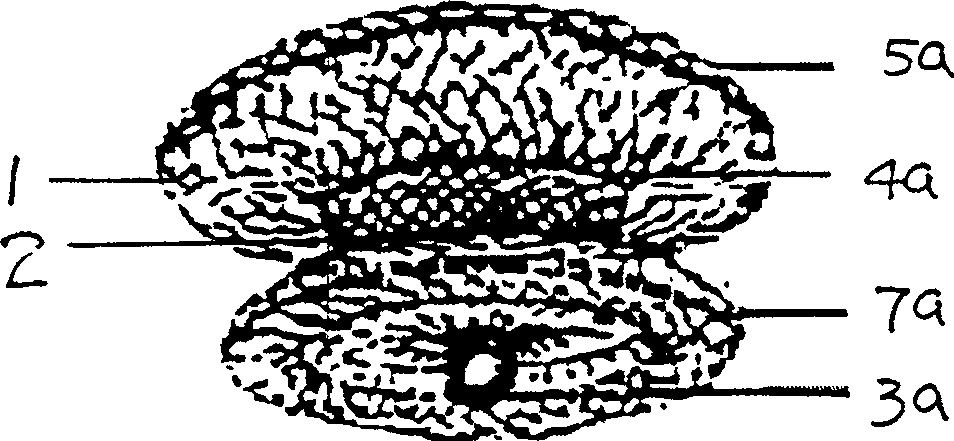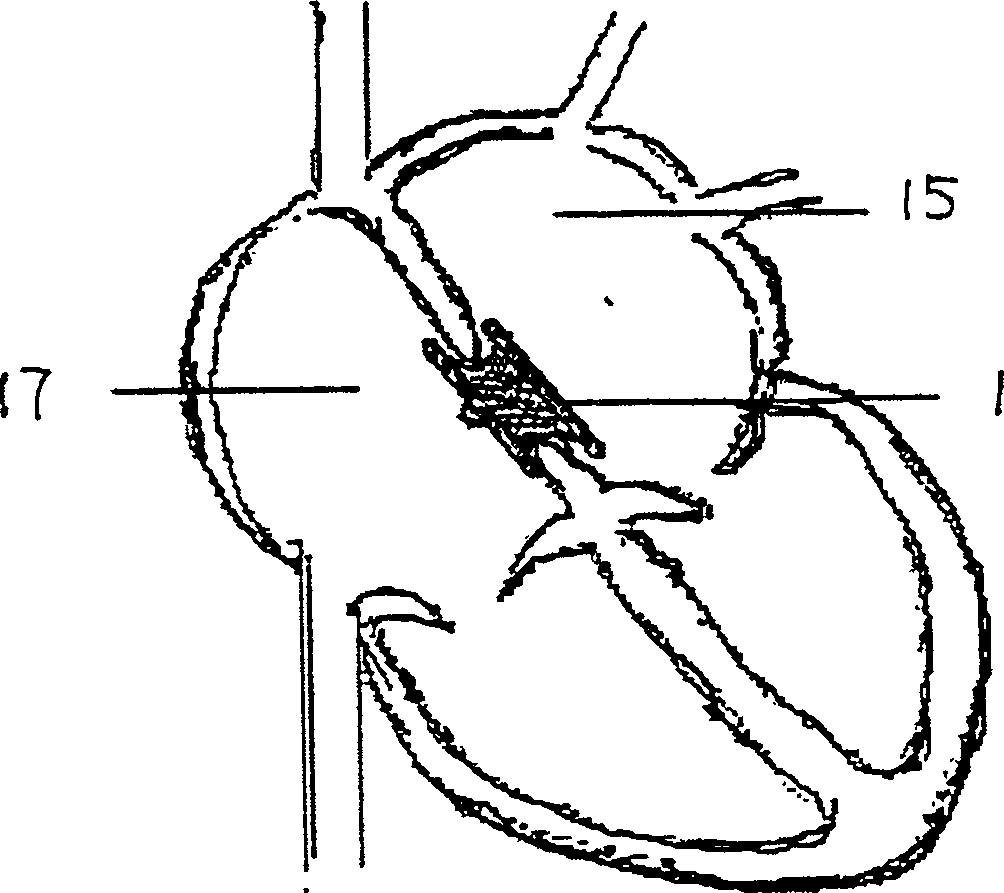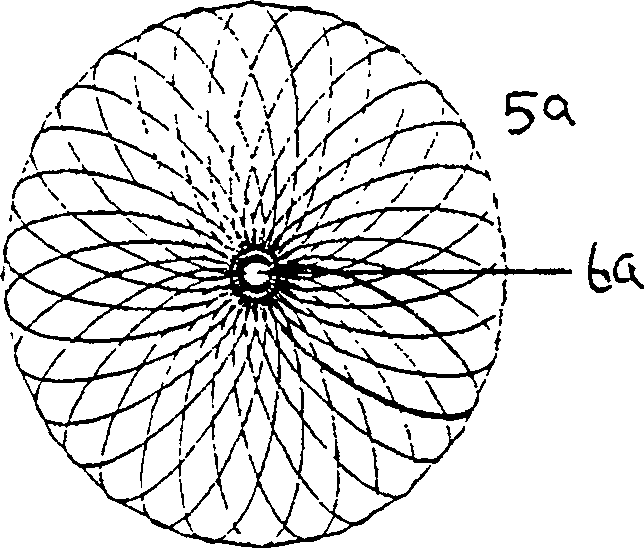Stopper for congenital heart structural defect, its manufacturing method
A heart structure and occluder technology, which is applied to the device of human tubular structure, medical science, blood vessels, etc., can solve the problems of occluder delivery and other problems, and achieve the effects of reasonable spacing, strong support, and convenient placement.
- Summary
- Abstract
- Description
- Claims
- Application Information
AI Technical Summary
Problems solved by technology
Method used
Image
Examples
Embodiment 1
[0116] The diameter of the secundum atrial septal defect is 15mm, and its edge is more than 5mm away from the top of the atrium, the mitral valve, the tricuspid valve, and the opening of the pulmonary vein. Use an atrial septal defect occluder with a waist diameter D = 15mm. The diameter of the disc on the left atrium side of the occluder is 29 mm, and the diameter of the disc on the right atrium side is 26 mm.
[0117] as attached Figure 1-4 As shown, the embodiment of the present invention provides an atrial septal defect occluder for congenital heart disease, which is composed of a nickel-titanium alloy wire stent 1 and a polyester fiber membrane 2 .
[0118] The atrial septal defect occluder provided by the present invention is composed of a superelastic nickel-titanium alloy wire stent 1 and a polyester fiber membrane 2; wherein, the nickel-titanium alloy wire is the occluder stent 1; the polyester fiber The membrane 2 is lined in the middle of the occluder stent 1; on...
Embodiment 2
[0145] Perimembranous ventricular septal defect, the diameter of the defect is 5 mm, and the distance from the upper edge of the defect to the aortic valve and tricuspid valve is 3 mm. A symmetrical ventricular septal defect occluder with a waist diameter of D = 6 mm was selected. The diameter of the discs on the left and right sides of the occluder is 10mm.
[0146] as attached Figure 5 As shown in -8, the embodiment of the present invention provides an occluder for cardiac ventricular septal defect, which is composed of a nickel-titanium alloy wire stent 1 and a polyester fiber membrane 2. Wherein, the nickel-titanium alloy wire is the occluder stent 1; the polyester fiber membrane 2 is lined in the middle of the occluder stent 1 to block blood flow; the occluder stent 1 There is a nickel-titanium alloy wire at one end to form the connecting ring 3b, which is used to connect with the delivery device 30. Wherein, 21 is the aorta, and 22 is the pulmonary artery, and the oc...
Embodiment 3
[0177] Perimembranous ventricular septal defect, defect diameter 4mm, defect upper edge 2mm from the aortic valve, 3mm from the tricuspid valve. An asymmetric ventricular septal defect occluder with a waist diameter of D = 5 mm was selected. The upper edge of the disc on the left side of the occluder is 0.5mm larger than the waist, and the lower edge is 5.5mm larger than the waist.
[0178] as attached Figure 9 As shown in -12, a novel asymmetric occluder for ventricular septal defect provided by the embodiment of the present invention, the stent 1 braided by nickel-titanium alloy wire mainly includes the left ventricle of the asymmetric occluder facing each other The disc 5c and the right ventricle disc 7c of the occluder, the waist 4c of the occluder connecting the left ventricle disc 5c of the above-mentioned occluder and the right ventricle disc 7c of the occluder, and the occluder at one end There are nickel-titanium alloy wires to form the connecting ring 3 , which is...
PUM
 Login to View More
Login to View More Abstract
Description
Claims
Application Information
 Login to View More
Login to View More - R&D
- Intellectual Property
- Life Sciences
- Materials
- Tech Scout
- Unparalleled Data Quality
- Higher Quality Content
- 60% Fewer Hallucinations
Browse by: Latest US Patents, China's latest patents, Technical Efficacy Thesaurus, Application Domain, Technology Topic, Popular Technical Reports.
© 2025 PatSnap. All rights reserved.Legal|Privacy policy|Modern Slavery Act Transparency Statement|Sitemap|About US| Contact US: help@patsnap.com



